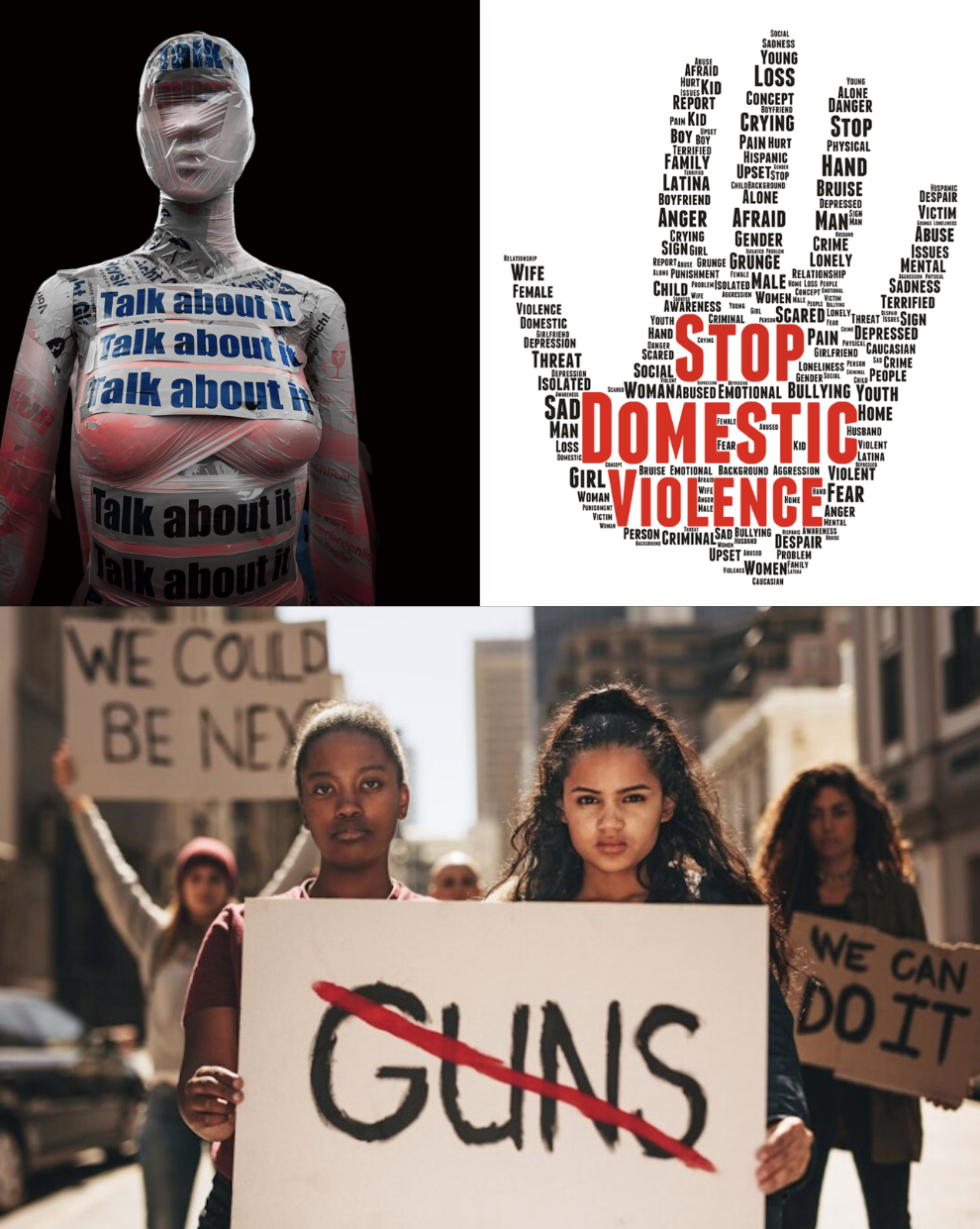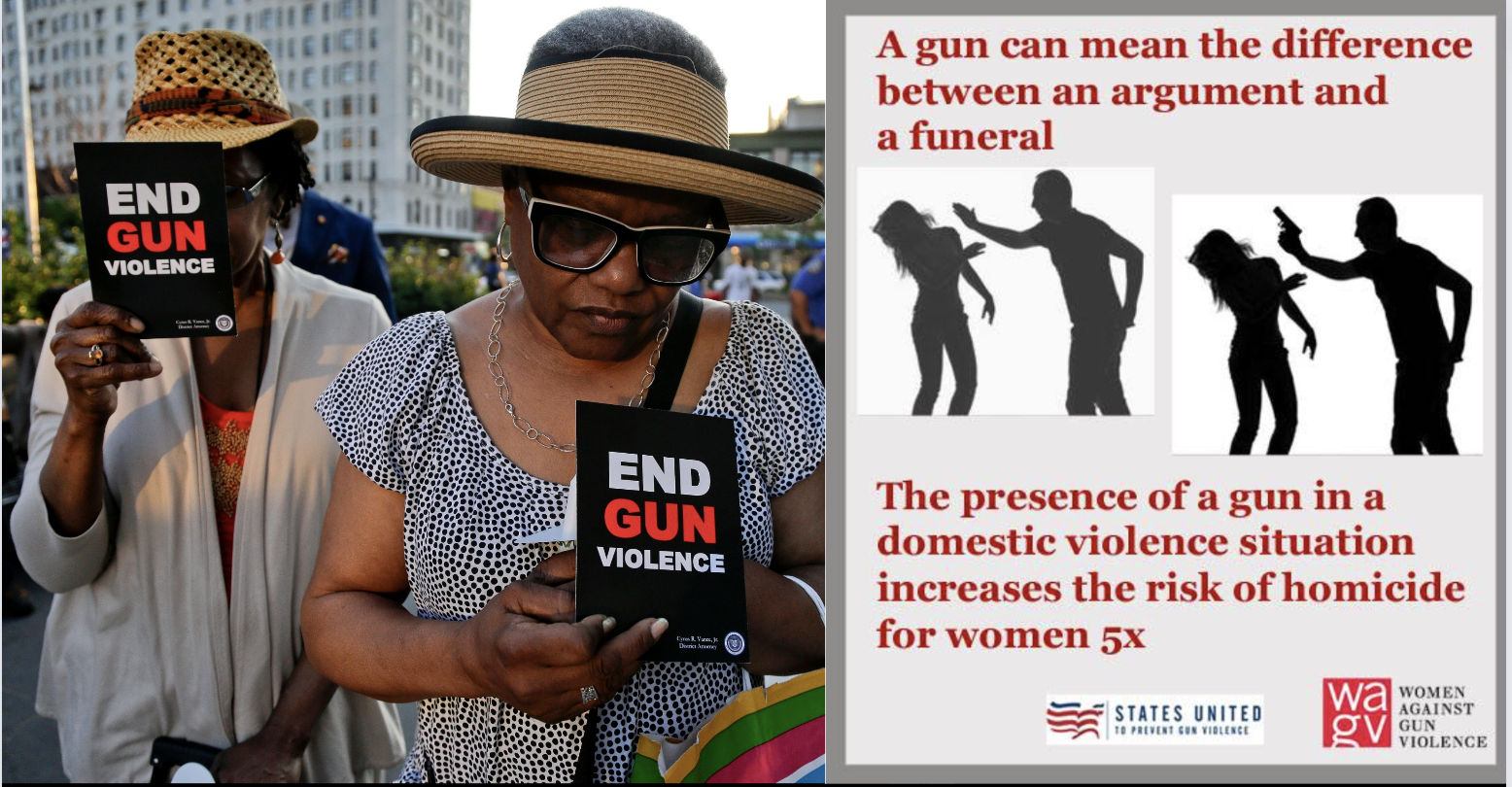Angelina Jolie Pens Major Essay on Domestic Violence and Racial Inequity in Treatments
/UL: Mika Baumeister @ Unsplash; UR: Women Against Gun Violence; L: School of Public Health Tulane University
In her compelling new essay "Addressing Health Inequities in Survivors of Domestic Violence," renowned actor and humanitarian Angelina Jolie delves into the urgent issue of health inequities faced by survivors of domestic violence.
Drawing from her extensive experience as a UN special envoy for refugee issues and an advocate for women's rights, Jolie brings attention to the often overlooked consequences that domestic violence has on the physical and mental well-being of its victims.
Defining Domestic Violence
The U.S. Department of Justice defines ‘Domestic Violence’ as “ is a pattern of abusive behavior in any relationship that is used by one partner to gain or maintain power and control over another intimate partner. Domestic violence can be physical, sexual, emotional, economic, psychological, or technological actions or threats of actions or other patterns of coercive behavior that influence another person within an intimate partner relationship. This includes any behaviors that intimidate, manipulate, humiliate, isolate, frighten, terrorize, coerce, threaten, blame, hurt, injure, or wound someone.”
The most widespread current statistics are that more than 10 million people suffer domestic abuse annually in America. 1 in 3-4 women and 1 in 7-9 men experience domestic abuse. The disparity between women and men suffering domestic abuse widens as the level of physical violence increases.
34% of Women and 6% of Men in America Murdered by an Intimate Partner
In America, of the 4,970 female victims of murder and nonnegligent manslaughter in 2021, law enforcement agencies reported that 34% were killed by an intimate partner. By comparison, about 6% of the 17,970 males murdered that year were victims of intimate partner homicide. About 16% of female murder victims were killed by a nonintimate family member—parent, grandparent, sibling, in-law, and other family member—compared to 10% of male murder victims. These statistics are reported by the 50-years-old Bureau of Justice Statistics.
U: Chart by Bureau Of Justice Statistics; L: Mika Baumeister @ Unsplash
With her characteristic empathy, Jolie exposes the stark disparities in access to healthcare, support services, and even racial justice faced by these most abused individuals, who are largely female in self-identity.
Jolie does not minimize the impact of domestic abuse on white women. But she highlights how survivors who belong to marginalized communities, such as racial and ethnic minorities, LGBTQ+ individuals, and those with disabilities, often encounter additional barriers when seeking support and healthcare.
Angelina Jolie Calls Out Undetected Skin Bruising on People of Color as a Major Medical Problem
We think of the issue of racial justice in terms of healthcare access for abused people of color. But Jolie deals aggressively and directly with skin color and visible bruising.
Jolie writes that “medical research, imagery, and training continue to center on white skin, not on how injuries present differently in patients with darker skin tone. “As the mother of children of multiple races, I have seen my children of color be misdiagnosed, at times in ways that endangered their health,” she wrote.
Jolie details a visit with forensic nurse Katherine N. Scafide, a tenured Associate Professor, forensic nurse and scientist in the School of Nursing at George Mason University.
We are familiar with the absurd but widespread belief that women of color can handle greater pain. But this device deals with the very real problem of not even seeing or detecting bruising, when a doctor has the best of intentions to offer quality healthcare in communities of color.
Scafide demonstrated to the mom of six how a handheld device can highlight bruising on darker skin tones that had been invisible to the naked eye.
UR: Everytown.org modified by AOC; L: Mika Baumeister @ Unsplash; modified by AOC
“Alternate Light” Devices Are an Answer
The simple, portable device directed “alternate light”—in this case violet light with a yellow lens—toward the skin. The technique is up to five times more effective at detecting bruising than white light, as much as four weeks after injury, according to Professor Scafide.
For abuse victims, evidence of injury is often crucial for accessing legal protection and physical and mental health treatment, making the role of health care professionals critical. Adding further complications is the medical reality that bruising generally takes 48 hours to appear after an assault. Many first reponders ignore this medical reality, which minimally would require a telemedicine-type followup. Nurses are aware of this medical reality and many do have followup procedures in place.
Bruising Typically Appears After 48 Hours
These challenges are doubly serious, Jolie asserts, because of “the unacceptable, disproportionate impact of domestic violence on communities of color in America.” While Jolie acknowledges that this is just one step toward providing equitable health care for survivors of color, it’s an available medical aid that can generate immediate results.
Reminding us that the impact of domestic violence is not only physical, Jolie emphasizes the urgent need to understand this impact, as it extends far beyond visible physical injuries. Survivors often suffer from deep-rooted psychological trauma, leading to higher rates of mental health disorders such as depression and anxiety.
“Even as my family has access to high-quality medical care, simple diagnoses are missed because of race and continued prioritization of white skin in medicine,” Jolie wrote. “At a societal level, racial disparities in health care affect outcomes for millions of people. From technology to improving diversity and representation in medical research and training, it is past time to embrace new solutions.”
Jolie also references the use of unbiased forensic medical technology to be included in the Violence Against Women Act Reauthorization Act of 2022, which has become law.
For all the reasons outlined here, it’s an indisputable fact that in the aggregate, the impact of domestic violence in marginalized communities is more severe on victims of color. No one is trying to minimize its impact on white women — least of all me, for all the terrible reasons you can think of.
However, it’s even worse for more marginalized communities, and we are faced with specific challenges like this “inobservable to the naked eye in ordinary light” bruising of skin among people of color — a problem we are only beginning to address.




